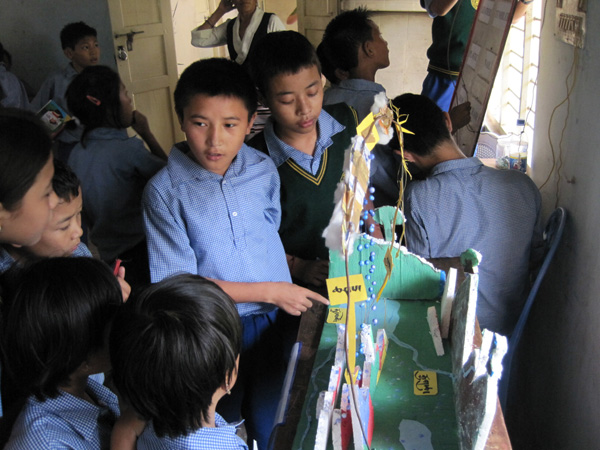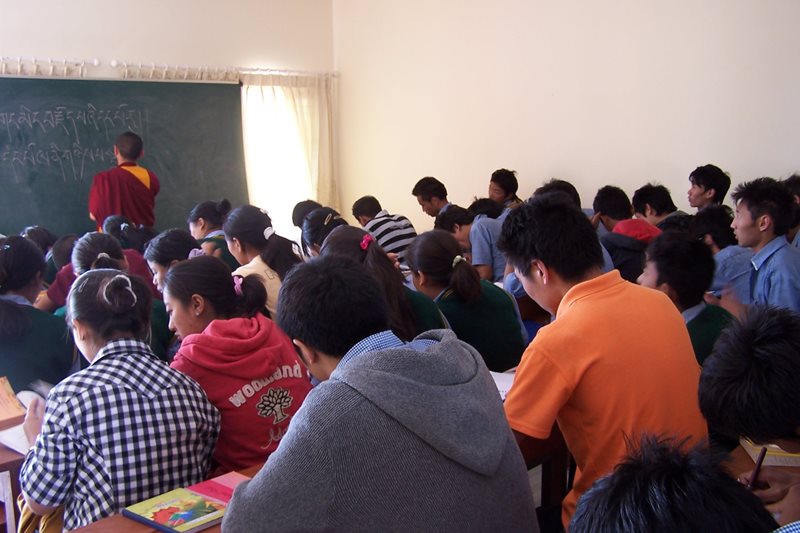An increase in the local population puts pressure on resources

Children learning through discussion (photo: SOS archives).
Over the decades, the Tibetan community has struggled to become self-sufficient. Using modern agricultural methods they have been able to produce a variety of crops which include maize, rice, ginger and vegetables. In addition to farming, people are involved in the service sector, running shops and restaurants.
However, although the number of people living in the settlements has increased, the amount of land they have to live off has essentially stayed the same. Many living in the settlements do not have Indian citizenship and they are therefore unable to buy land.
Due to the high levels of unemployment, there is an increasing number of families who are destitute. The growing population has also put stress on education centres and day care centres. Some parents have no option but to leave small children alone at home alone while they go to work. For this reason, Tibetan Children's Villages has opened a number of day-care facilities where children can be looked after while their parents go out to make a living.
Although the children here do have access to education, problems arise when they want to start further education. Those without Indian citizenship have to pay foreign student rates to study at Indian institutions, and without the help of scholarships, many simply cannot afford it. This limits the employment perspectives of young people, who are then often forced to find work in the informal sector.
Supporting children from Tibet, autonomous region of China
Tibetan Children's Village Bylakuppe is located in the Lugsum Samdupling Tibetan Settlement, about 90 kilometres from Mysore city. The village was built between the two largest settlements, and has been supporting the local population for over three decades. All the children in the families have lost parental care; about half of the children have no parents and the other half have parents who are in Tibet, autonomous region of China or in other locations throughout India.
What Tibetan Children's Villages does in Bylakuppe

Young people concentrate in the classroom (photo: SOS archives).
If children lose parental care, they can find a loving home with one of the 34 families, where they grow up with their sisters and brothers. Tibetan Children's Village generally have many inhabitants due to the large number of Tibetan refugees. Therefore the families may have up to thirty members and sometimes even more.
Younger children attend kindergarten. Older children can study at both primary and secondary level. The school has an excellent reputation.
Several SOS Youth Houses have been set up at Bylakuppe. With the support of qualified professionals the young adults are guided through this new stage of their lives.